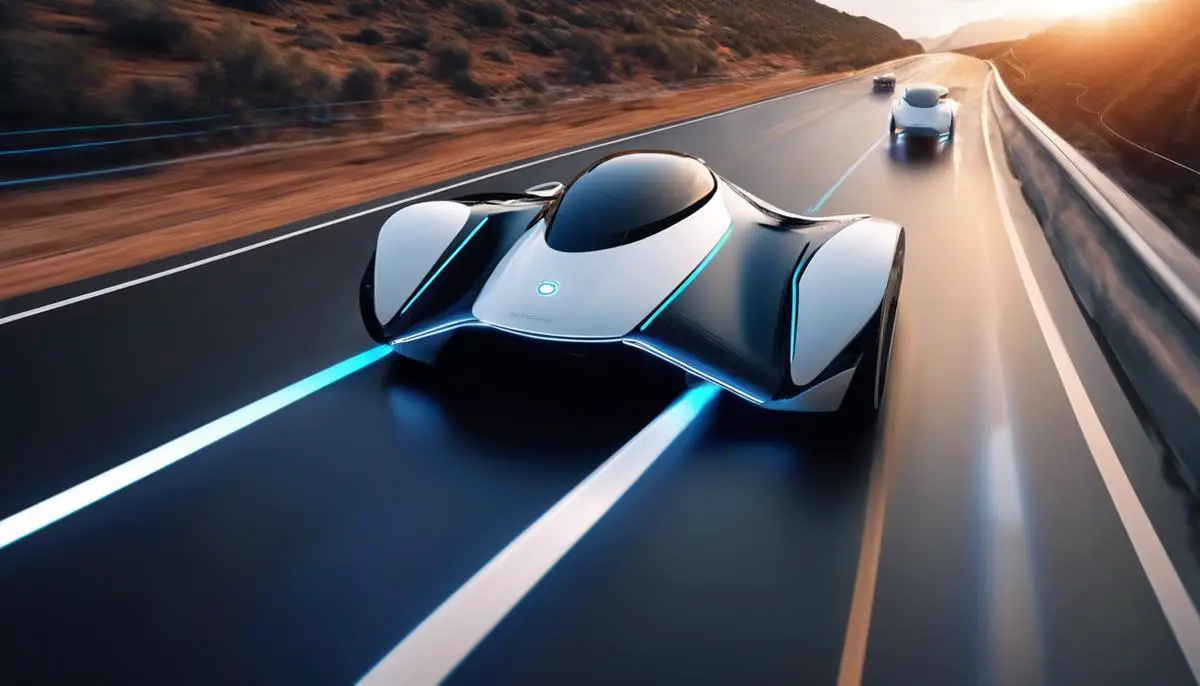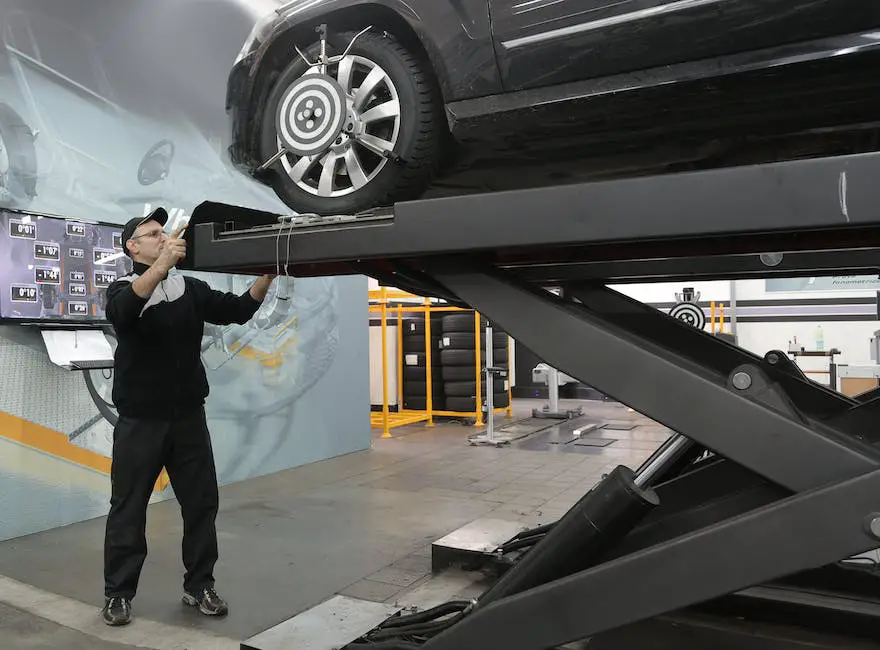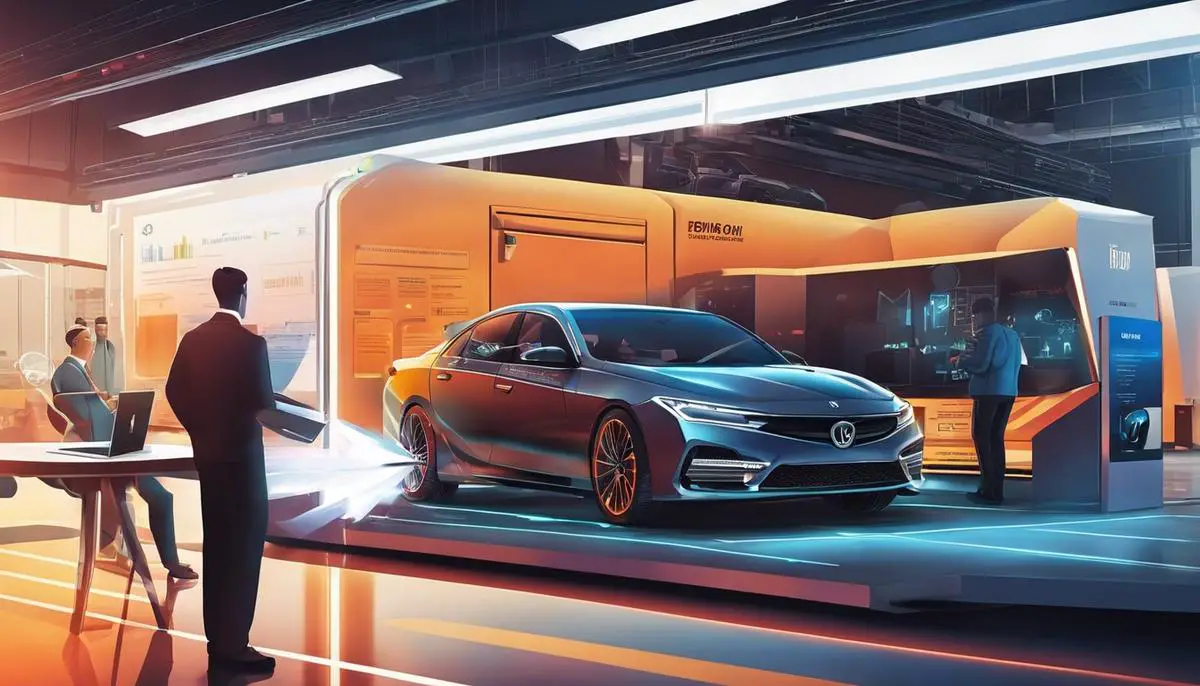Harnessing AI for Enhanced Vehicle Testing Procedures
The automotive industry is embarking on an era of dynamic transformation with the advent of Artificial Intelligence (AI). As traditional procedures merge with technological advancements, the concept of vehicle testing is rapidly evolving. The strategic role of AI in vehicle testing isn’t just promising, but it’s shifting the paradigm for efficiency, accuracy, and reliability. This paper intends to delve into how the incorporation of AI in this critical domain of the automobile industry is shaping its future. It provides an introspective view into the benefits, challenges, inherent solutions, and realistic scenarios illustrating the diverse aspects and implications of this profound transition.
Exploring the Concept of AI in Vehicle Testing
When contemplating the dizzying pace of technological innovation within the automotive industry, one cannot bypass the transformative role played by Artificial Intelligence (AI). Indeed, as the axis of the industry gradually shifts towards more connected, autonomous, sharing, and electrified (CASE) solutions, the traditional methods of vehicle testing fail to keep the pace. A paradigm shift appears on the horizon: AI-powered methodologies that are equal parts transformative and revolutionary.
A focal point arises in the realm of autonomous vehicle testing, wherein AI algorithms model scenarios that reflect real-world driving situations. Conventional testing methodologies with human drivers occupy an astronomical timeline and are susceptible to errors. In stark contrast, AI-based simulations accelerate the pace of testing grandly. It not merely assists in the simulation of controlled testing scenarios, but also models the unpredictable elements of human behavior and environmental variables. The result? A comprehensive data set that examines assorted permutations, going beyond the static, controlled environment of a test track.
AI, further, is instrumental in predictive analytics and AI-enabled hardware, essential tools for assessing vehicle durability and safety. Traditionally, ramifications of long-term usage on vehicles were hard to predict, implicating the process of timely upgrades and maintenance tasks. However, with AI’s ability to handle large data-sets and sophisticated predictive modeling, long-term usage impacts can be scrutinized accurately. The talismanic role of AI is especially evident in analyzing engine behavior, potential component failures, the effect of different climates and terrains, and driver behavior analysis.
The world of vehicle cybersecurity is another arena that is fundamentally and rapidly being reshaped by AI. As vehicles burgeon in complexity, interactivity, and connectivity, they become potential targets for cyber threats. False data injection, sensor spoofing, denial-of-service attacks, and network violations are no longer negligible risks. AI emerges as the trailblazer with its potential to detect anomalies, scrutinize patterns, and issue real-time alerts, thus affirming cybersecurity robustness.
Assuredly, it would be an oversight not to mention the contribution of AI in enhancing the efficiency of Electric Vehicles (EVs). AI algorithms are capable of making precise predictions about battery performance over time. Machine learning models optimize energy consumption by factoring in real-time conditions, journey details, and driving behaviors, thereby extending the battery life.
In conclusion, AI’s implementation within vehicle testing signifies a tectonic shift that has opened new vistas to explore. Its ability to generate accurate predictive models, expedite testing, and enhance safety protocols, all wrapped within an efficient and cost-effective bundle, makes it no less than a revolutionary force. The horizon we glimpse right now is undeniably intriguing, and surely, as AI continues to evolve, the solutions we see today are merely precursors to even more breakthroughs in the future.

Advantages of Implementing AI in Vehicle Testing
The Latent Potential of Automating Vehicle Testing: An Exploration of the Multifaceted Benefits of Incorporating AI
The deployment of Artificial Intelligence (AI) in the realm of vehicle testing has indeed brought forth a plethora of opportunities. A thorough examination of the advantages and implications of blending AI with vehicle testing inevitably presents numerous insights into the future trajectory of the automotive industry.
A noteworthy subject for exploration is the significant reduction in testing time thanks to AI technology. Time, an inestimable resource in the highly competitive automotive sector, can now be considerably economized in vehicle testing. The AI-powered simulations, enabled by high-performance computing, induce a significant cut-down on extensive real-world driving trials, reducing testing time from years to mere weeks. In essence, the AI technology facilitates replicating complex driving environments in a controlled condition, rendering the process both efficient and comprehensive.
On a similar note, the cost efficiency engendered by AI in vehicle testing is worthy of attention. Actual road trials necessitate vehicle prototypes that entail substantial expenditure. These costs can now be dramatically curtailed through AI-enabled virtual testing, and the funds thus conserved can be redirected towards innovation and development in other areas.
AI-driven vehicle testing also presents the potential to significantly escalate the degree of reliability and accuracy in results. Offering a perfect blend of pattern recognition, correlation, and cognitive learning, AI facilitates detection of minor defects or issues that could potentially elude human scrutiny. AI-enabled systems harness data, identify patterns, and predict possible points of failure, ensuring a thorough, flawlessly-executed vehicle examination.
Contributing to the environmental sustainability is yet another promising avenue opened up by AI. Traditional vehicle testing usually involves actual road trials often resulting in a substantial carbon footprint. The use of AI in vehicle testing as an alternative extrapolates minimal ecological impact, propelling the automotive industry towards a greener future.
The integration of AI is not confined merely to the terrain of testing. The prospect of AI in forecasting shifts in consumer preferences offers an invaluable tool for automotive manufacturers. AI models, based on historical data patterns, can befuddle even the most seasoned economists in predicting consumer behavior, providing the industry with the competitive edge that is critical for survival and growth in the dynamic marketplace.
Far from being merely a technological tool, AI manifests as a harbinger of a paradigm shift in the auto industry. It brings with it possibilities that are revolutionary, transformative, and groundbreaking. It is therefore deducible that the marriage between AI and the automotive industry is not just inevitable, but desirable, marking a milestone in the evolution of this dynamic and rapidly progressing industrial domain. With its compelling benefits and far-reaching implications, AI-powered vehicle testing is irrefutably poised to redefine the very ethos of the automotive landscape.

Challenges and Solutions in AI Implementation in Vehicle Testing
Despite its transformative role, the implementation of AI in vehicle testing is not devoid of challenges. These hurdles must be addressed comprehensively to make the most of the potential rewards introduced by the combination of AI and automotive science.
First, it is important to understand the variable nature of AI algorithms, which require extensive and continuous learning to respond effectively in a dynamic environment. A crucial challenge lies in gathering and processing extensive data sets, which pertain to different driving conditions, to train these algorithms effectively. Ongoing, complex programming endeavors are necessary to encompass the range of variables and uncertainties present in real-world scenarios. Expanding upon this, differing global regulations regarding data privacy and protection could potentially hinder the collection of necessary information.
Second, the high development cost of AI systems for vehicle testing represents another substantial barrier. The intricate algorithms and state-of-the-art sensors do not come cheap, and designing, creating, and maintaining these systems translates into increased financial outlay. Collaborative efforts between academia, industry, and government bodies can bridge this gap, fostering innovative solutions while mitigating costs. Research grants and government-backed incentives can help offset these high up-front costs while also promoting further advancements in the field.
The challenge of integrating AI into pre-existing vehicular systems also merits consideration. Constant evolution in AI technologies often requires corresponding updates in vehicle design and testing infrastructure, which could be resource and time-intensive. With this in mind, the need for flexibly designed vehicular systems that can accommodate emerging AI tech becomes apparent.
Fourth, cybersecurity constitutes yet another major concern. While AI can bolster cybersecurity measures, the networking infrastructure and AI itself can also become targets of sophisticated cyberattacks. The challenge lies in developing robust, self-learning cybersecurity tools that can promptly identify and neutralize such threats.
Lastly, there is the pressing issue of potential job displacement by AI. While AI can perform tasks more efficiently and accurately, the prospect of job losses is a social concern. Industry leaders can address this by facilitating skill development and retraining programs, preparing the workforce for an evolving employment landscape where their roles may shift but not disappear.
In elucidating the challenges inherent in the implementation of AI in vehicle testing, it becomes clear that multifaceted, proactive solutions are required to navigate these hurdles. By fostering cross-sector collaboration, prioritizing continual learning and innovation, safeguarding cybersecurity, and preparing the workforce for change, the full potential of AI in revolutionizing vehicle testing can be harnessed.
As we move forward into an era where AI becomes increasingly integrated into vehicle testing and the automotive industry at large, successfully navigating these challenges will inform the trajectory of this influential tech’s future.

Case Study: Actual Implementation of AI in Vehicle Testing
Expanding on the value of AI in vehicle testing, AI-driven technology significantly reduces the extensive time and resources traditionally required. Amplified by machine learning algorithms, AI can swiftly learn and make predictions, driving quicker and more accurate decision-making in the testing process. Simulation technologies powered by AI, for instance, can model potential vehicle scenarios in intricate detail and with rapid speed, eliminating time-consuming and hazardous real-world trials.
AI also underscores cost efficiency, a fundamental concern in vehicle testing. Machine learning algorithms and AI-based tools drive optimization by enhancing precision and reducing error margins, thereby minimizing the cost of re-tests and adjustments. In some instances, AI-driven digital twins, virtual replicas of physical systems, can test varying vehicle components or complete systems economically, eliminating the need for costly prototypes.
Reliability and accuracy are pursuits central to vehicle testing procedures. AI-enabled solutions transcend human ability to assimilate and process vast data volumes, making vehicle testing remarkably more reliable and precise. These systems identify finite details and discrepancies that could go unnoticed by manual inspection, mitigating potential risks.
In the sphere of environmental sustainability, AI intersects with vehicle testing procedures in meaningful ways as well. By enabling more accurate testing, AI minimizes waste arising from trial and error. In climate control tests, for instance, AI can serve to balance vehicle energy usage and passenger comfort, contributing to the broader goal of energy efficiency.
AI systems help forecast shifts in consumer preferences, a crucial input in today’s fast-evolving automotive landscape. By analyzing huge data troves, AI can discern patterns and trends linked to consumer behavior, influencing vehicle manufacturers’ decision-making processes about vehicle design and engineering.
A transformative tool, AI is completely reshaping the traditional norms of vehicle testing by vastly improving accuracy, reliability, efficiency, and speed of testing. And as technology evolves, so too do the potential applications for AI within this sector.
What unfolds on the horizon of AI’s future in vehicle testing further underlines its exciting potential. With profound advances in machine learning and data processing, AI is poised to redefine the automotive landscape. Self-healing, self-testing, and self-configuring vehicles could soon transform from science fiction to reality.
However, the variable nature of AI algorithms and their reliance on extensive datasets present challenges. Regulatory issues regarding data privacy and protection pose another hurdle, underlining the need for robust cybersecurity measures. The high development and implementation costs of AI systems in vehicle testing present another obstacle, potentially outweighing the benefits for some automotive manufacturers.
AI integration within pre-existing vehicle systems proves a complex task, requiring strategic planning and resource allocation. In this context, self-learning tools could help bridge the gap, empowering such systems with the capacity to learn and adapt dynamically.
While AI continues to revolutionize the automotive world, we must be mindful of potential job displacement due to automation. It is essential that initiatives are implemented for skill development and retraining, preparing the workforce for the ever-evolving landscape brought on by AI and automation. As academics and industry experts, it is our responsibility to explore and evaluate these possibilities, in the quest to harness AI for the optimization of vehicle testing procedures.

Through the lens of this analysis, it is evident that the application of AI in vehicle testing emboldens a wealth of opportunities for the automotive industry. Yet, it is vital to acknowledge the associated challenges and the pertinent solutions. Each success story penned by AI’s implementation offers practical insights, lessons, and pathways to overcome potential hurdles. Thus, fortifying the automobile industry’s growth and sustainability. The evolution of AI continues to unfold, so does its integration into vehicle testing. The commitment to understanding, exploring, and adopting AI in vehicle testing will undoubtedly dictate the future trajectory of the automobile industry.
